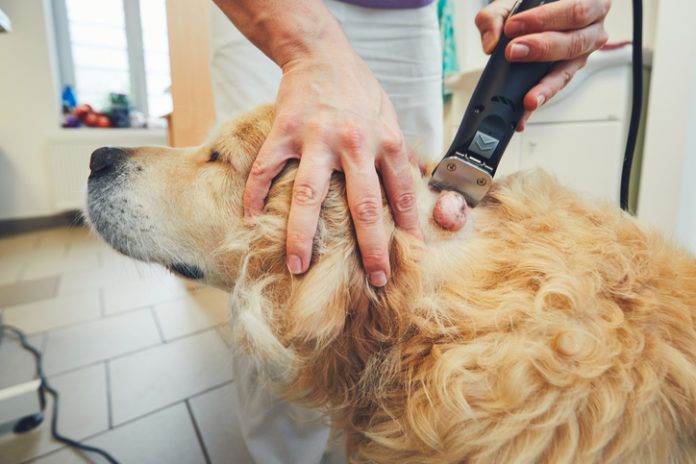Q. My dog is only 5 years old but has already been getting fatty tumors for a couple of years. The vet says they’re harmless, but I find them unsightly and wonder if there’s a way to have them removed other than with surgery?
Harriet Loveless
Reading, Pennsylvania
A. Dear Ms. Loveless,
There’s no surprise in your dog’s ongoing development of fatty tumors. Once a pet develops one, he is prone to developing more.
Don’t worry about removing them even though you may not like how they look. Your dog certainly doesn’t care. The only reason to remove a fatty tumor is if it’s interfering with a dog’s mobility. If it’s in the “arm pit,” for instance, it could make walking painful and would need a simple surgical excision. (There’s no other way to remove a fatty tumor other than to operate.)
While you should skip having fatty lumps removed for cosmetic reasons, it’s important to have every single tumor that develops aspirated by a veterinarian to make sure it’s benign. The vet will pass a needle into the lump (it doesn’t hurt the dog) to withdraw some cells and examine them under a microscope. In the vast majority of cases, it will be a lipoma — a harmless fatty tumor that will not invade nearby tissue or migrate to tissue elsewhere in the body, as a cancer could.
On the off chance that a new lump does turn out to be cancerous, you will at least have caught it as early as possible so that treatment has the best chance of being effective. An exam will also allow your vet to make sure the lipoma isn’t “infiltrative.” It’s not common, but sometimes a non-cancerous lipoma can invade nearby muscles, nerves, and blood vessels and needs to be removed as well. Infiltrative lipomas occur deeper in a dog’s musculature and feel harder than benign lipomas, which feel fairly soft and move more easily under the skin. Infiltrative lipomas are easiest to remove when they are small.
But never diagnose a lump based on how it feels. That’s not a wise bet for a surefire diagnosis. Go for the needle aspiration.





